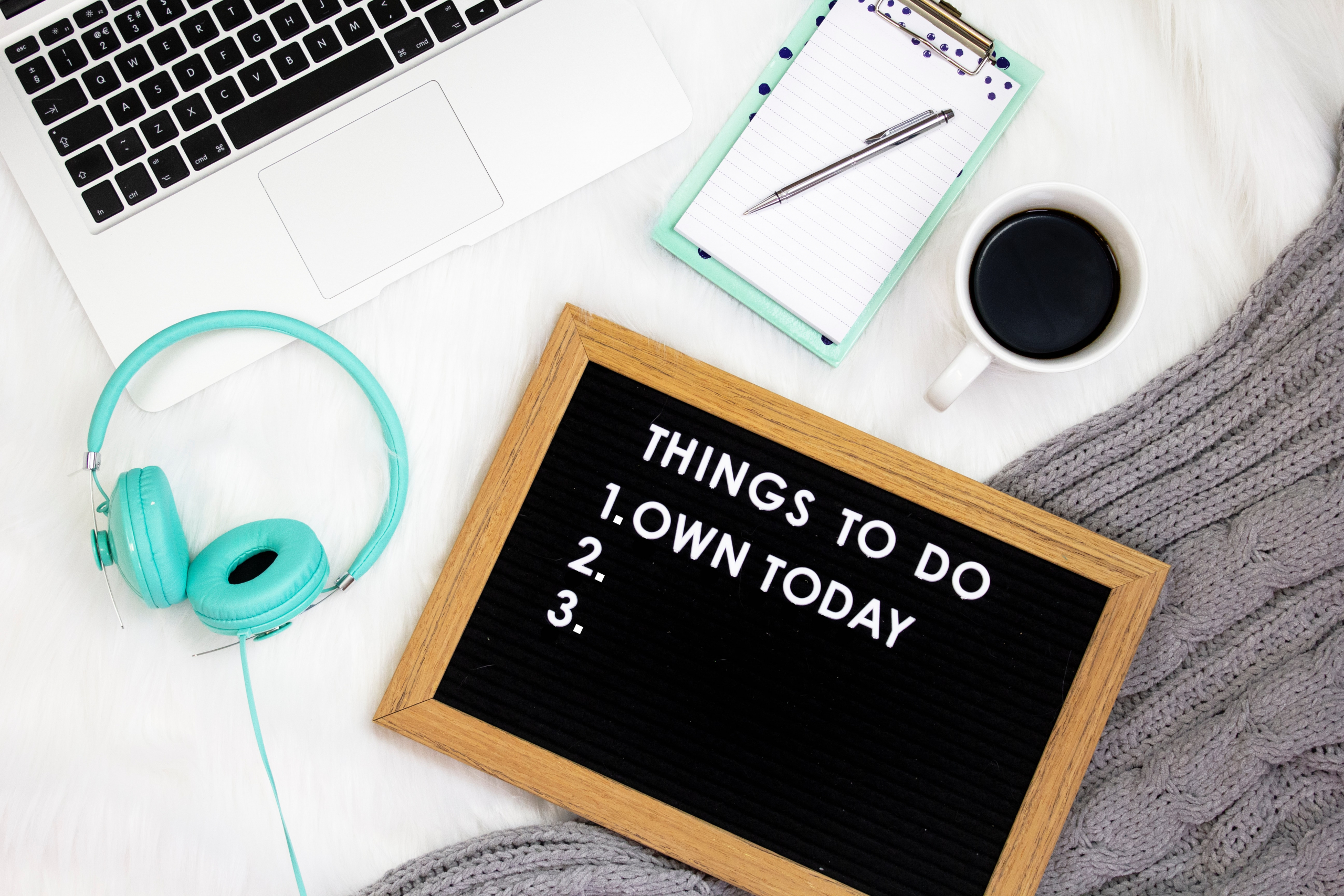The start of a new year likely has you thinking about all the things you want to do in the coming weeks and months. Many of us set goals or resolutions for the year and sometimes have a hard time reaching them. A key component that you may be missing is an effective to-do list. You might think that you’ll remember the tasks you thought of on January 1st, but by the time February rolls around, you’ll have a hard time recalling them. This is simply because our brains are not meant to store unlimited information. They are meant to process information which is why having a to-do list is key. Setting up an effective to-do list will allow your brain to think more creatively and do deep work. I’ll explain some of my favorite ways to help set up a system that will keep you productive and ensure you don’t forget anything.
Pen and paper vs. an app
When setting up a to-do list, you first need to decide if you are going to use pen and paper or use an app to organize your tasks. Both have many advantages and the thing to keep in mind is to figure out what works best for you. Are you someone who always has their smartphone nearby and feels comfortable using technology? If so, a to-do app like Any.do may work well for you. When I work with clients on productivity training, this is an app I use to help clients create recurring tasks, sync with their calendars, set reminders, and tag items so it’s easy to plan your day. An app is convenient so that no matter where you are, you always have access to your tasks. Most productivity apps like this will also allow you to share with other users which is helpful if you want to share lists with a significant other or co-worker.
If you are someone who feels more comfortable writing things down and use a paper calendar to keep track of appointments, a paper to-do list is probably best for you. I have a couple of paper to-do list systems that I like. The first is the Essential Daily Planner. It’s a calendar and task manager in one which is a huge help for staying productive. The second is the Bliss Collection daily planner notepad. It’s a simple system that helps you plan and visualize your day all on one piece of paper. Another great option for those that like paper is to start a bullet journal. This is a perfect method if you love color, doodling, and of course staying productive. Bullet journals let you customize every page and list and can be a calendar, diary, and project planner all in one. Regardless of what paper method you choose, writing helps you remember things which is a plus.
Time for a brain dump
Once you are ready to start creating your effective to-do list, a brain dump is the best way to start. If you have random to-do lists already started or a calendar that’s partially filled out, use what you may have to start gathering information. Remember that you likely have many to-do’s lurking in your e-mail inbox and in stacks of papers on your kitchen counter or on your desk. Unearth those tasks and get them out of hiding! Think of all areas of your life where you have things to do: home, work, school, and kids. Whether you have errands, appointments on your calendar, project tasks, or recurring responsibilities, make sure that you have everything in one spot. The key to an effective to-do list is that you know that everything you need to focus on is in this one place. Write down or enter your tasks in your new to-do list system and continue to do so for the days and weeks to come until it becomes second nature.
Be specific
One thing that you might be doing that keeps you from being productive is that your to-do list is too vague and you haven’t determined the next actions you should take. The best way to boost your productivity is to make sure that you are very specific with the tasks you need to complete. A truly effective to-do list will have detailed items that ensure that you don’t miss a thing.
For example, if an item on your to-do list is “remodel bathroom”, that’s not very helpful. A multi-step project like that can be broken down into several smaller tasks. To start off, your tasks might be “call the contractor” or “price tile at hardware store” or “order light fixture”. Using verbs like E-mail, Call, or Research when listing your tasks can be helpful when trying to get specific and will help identify next actions. Breaking down your to-do list into specific actionable items will help so that you don’t miss a step and will keep you on track.
Batching tasks
Now that you have a list of specific tasks in your to-do list system, your first instinct might be to go through your pending items in the order they are listed. Don’t! Group the items on your list together based on the type of task. You can do this whether you are using pen and paper or an app on your phone. For example, group all your errands together and all your phone calls or e-mails. From there you can batch tasks and get more done. This will make your effective to-do list even more useful.
Instead of making a phone call, reviewing an email, and then filling out an expense report, make all your pending phone calls at one time. Review your emails a couple of times per day. Plan to do all your expense reporting together instead of at multiple times during the day. When you focus on one type of job, it will help you pay attention and you are less likely to procrastinate.
Consider timing
You know the phrase “timing is everything”? Well, yes, of course it is! You’ll find that you have items on your to-do list that need to happen frequently. Or you might discover that some tasks are better to get done in the morning. So think of the timing of things — is this something that needs to be done during business hours? Does this item have a deadline? Is this a monthly task?
Any items on your to-do list that are recurring can be handwritten in your calendar in advance so that you don’t forget them. Consider setting recurring items on specific days of the week or month to get in a regular routine. For example, you can pay bills on the first Monday of every month, or do laundry every Saturday morning. If you’re using an app, set a reminder so that if your item is something that happens monthly, you can get it completed on time. When you are batching tasks, think about the time of day. You might decide that morning is better for doing things at your computer so your afternoons are clear.
If you find that your to-do list is overwhelming, don’t forget that you can renegotiate your tasks. Whether you are using paper or an app, you can move today’s tasks to tomorrow or next week if you need to. If you use Any.do, you can easily drag and drop items to a different day to accommodate changes in your schedule or re-prioritize. If your calendar is looking jam-packed, pick the top 3 things that you want to get done in a day and the rest will still be there tomorrow.
I hope that these tips help you feel like you can get organized and boost your productivity in 2021! If you’re looking for some assistance, don’t forget that I offer productivity training and would love to help you get your new year off on the right track with an effective to-do list. Do you have any favorite tips on how to keep your to-do list organized? I’d love to hear from you!
If you enjoyed this blog post and haven’t yet signed up for my free newsletter, click here to subscribe. You’ll get organizing tips and advice, as well as special deals delivered to your inbox each month. If you know someone who might enjoy this blog post please share this with them. Thanks for reading!











Leave A Comment